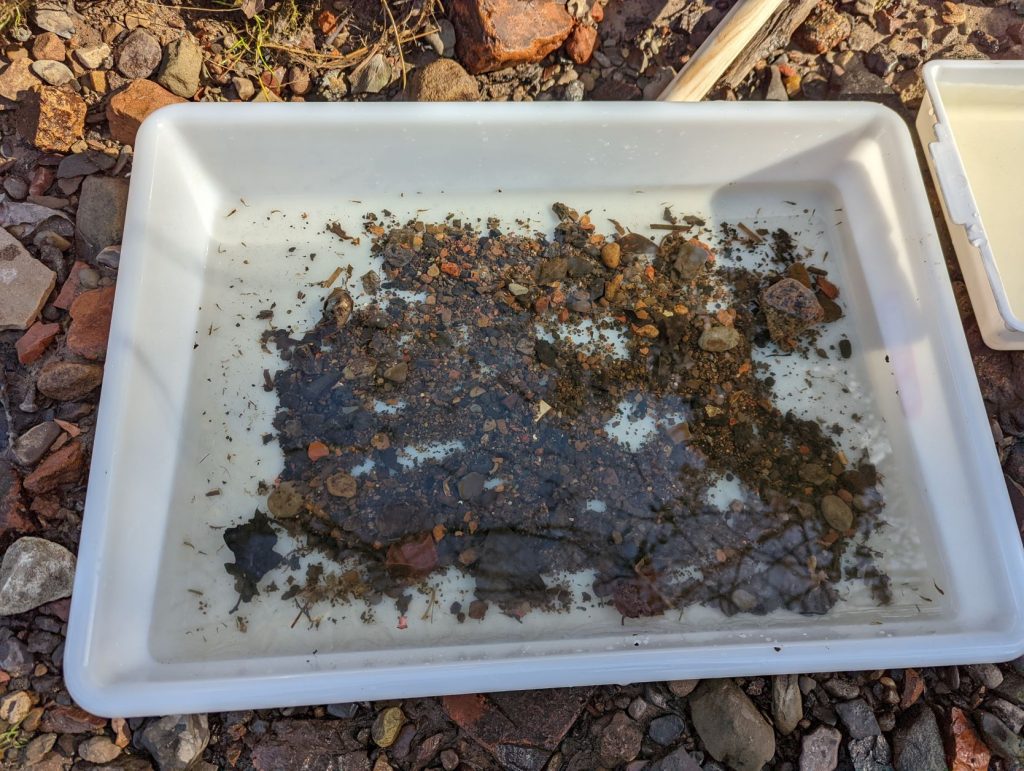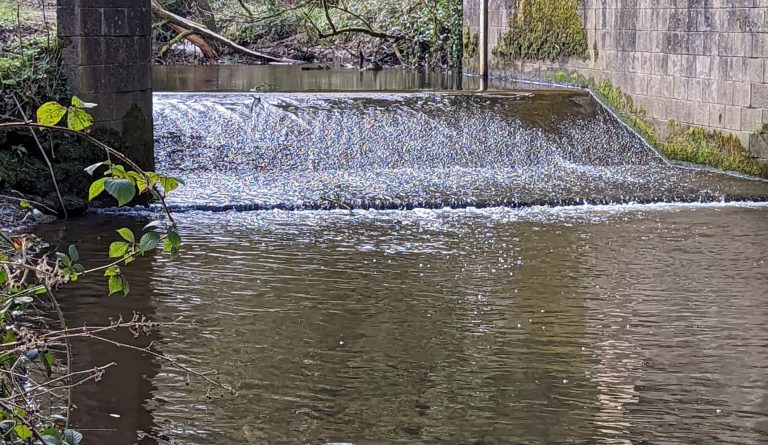This weekend, a small group of the Douglas Catchment Partnership, codenamed “The River Squadron”, visited the Tawd Valley Park to get some more practice in the art of Riverfly Kick Sampling.
We’ve really wanted to try kick sampling below the Cobbs Clough Road Weir on a number of occasions, to see if there was a differentiation in the freshwater invertebrates between kick sample sites along the river.
The site we choose is only around a 10m long stretch of water that is wedged between the weir and Cobbs Clough Road Bridge. It wasn’t the ideal place to kick sample as even though the depth was perfect, the riverbed mostly comprised of tennis ball sized rocks and stones. The optimal kick sampling riverbed would usually be a mix of smaller stones and sediment, but we made the best of the environment and gave it a good go. You’re probably thinking to yourself – “Why did we choose this area if it wasn’t an ideal kick sample site”? And that is an excellent question. The answer is that one of our objectives today was to see if we could find any fish species waiting at the bottom of the weir unable to continue up river because of the barrier.
Before we got started on kick sampling we did a quick scout around to help us become familiar with this area of the river. We were ecstatic to see around 6 medium sized fish between us – vaguely identified as chub, but not 100% sure, darting around our feet. And as mentioned above this helps provide evidence that fish are indeed waiting at the weir and are unable to move up. This impeding the repopulation of fish along the River Tawd and also possibly having small isolated fish populations stuck between barriers of the river.
After our scouting, we conducted a PH and other water tests of the river and began our kick sample sessions. Unfortunately, the results weren’t as positive as we would of liked them to have been. There was a severe lack of freshwater invertebrates compared to other sites we have been to along the Tawd. We had a small handful of Olive Mayfly Larvae, three Caseless Caddisfly Larvae and a few Freshwater Hoglouse. The reason for the low results could be any number of causes – high predation from fish and birds, unsuitable kick sample site and/or poor water quality along this stretch of the river (more than likely this). More investigation and sampling is needed to help identify the issue here.

We moved on to Summer Street Bridge and tried our kick sampling luck there. This site produced better results with more abundance of life, but it was still on the low side compared to past events we’ve had this year.

“The River Squadron” will continue to practice kick sampling along the River Tawd in the future, choosing old and new sites as we go. The more kick sampling we do the more we can build on the data and use the results to better understand what is happening in regards to the River Tawds water quality.


